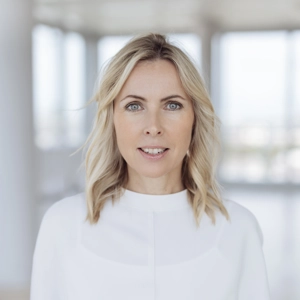How collaboration can work well in the office
If you want to find your way around the complexities of everyday office life today, you have to be at home - metaphorically speaking - on all the world's oceans: four generations that have been socialised in very different ways have to perform at their best together.
People whose job it is to lead others can show one way in which cooperation can still be successful: Increasingly, managers are replacing the directive "have to" with more respectful and inviting words, such as "want to" and "can". While the former sounds like being told what to do and not asking questions for long, the latter sounds like curiosity and a willingness to take on challenges. Psychology then speaks of intrinsic motivation, which determines (professional) behaviour from within.
 One of the skills firmly anchored in the VIG Talent Toolset is 'Collaboration and partnering', which is also reflected in all of the Group's employee programmes. This strengthens our employees' ability to approach others in order to identify opportunities and achieve trusting cooperation and better solutions. In this way, we not only promote the dynamic development of the Group, but also the personal development of our employees.
One of the skills firmly anchored in the VIG Talent Toolset is 'Collaboration and partnering', which is also reflected in all of the Group's employee programmes. This strengthens our employees' ability to approach others in order to identify opportunities and achieve trusting cooperation and better solutions. In this way, we not only promote the dynamic development of the Group, but also the personal development of our employees.
Learning from and with each other
Curiosity can help to overcome boundaries. And the willingness to accept challenges can inspire mutual learning. For the benefit of everyone: the team, the managers, the projects to be tackled together and the company. Baby boomers, for example, who are said to prioritise work over everything else and feel that this attitude is being challenged by millennials to the point of a crisis of meaning, can learn a little more life balance from them. They, in turn, can learn from their elders how the corporate culture has developed and grown. Younger employees can perhaps better understand why it is worth going the extra mile to maintain and develop it.
Employees can learn from their colleagues in other countries what makes people and therefore the market tick there. Newcomers can share their academic knowledge from their recent studies and training, while older employees can contribute their practical expertise and experience. Risk-takers can exchange ideas with those who work slowly and deliberately and thus better plan the success of their projects.
Leadership at eye level: visions, goals and trust
What does the company and management need to achieve this? A climate of appreciation in which there is room for all differences and particularities. Communication at eye level between the company/manager and employees. A corporate culture in which information is shared and not withheld in order to position oneself. And above all: clear visions and goals, a binding framework and trust. Employees who know and understand the meaning of their work and feel a sense of belonging to their team and the company give their best, even without pressure.
 With CO³, we are strengthening content-related and personal exchange across national and company boundaries. New ways of Collaboration create transparency and inspiration. It is crucial to involve colleagues from the outset and to shape new paths together. In this way, change is not perceived as a threat, but as an opportunity and new things as enrichment.
With CO³, we are strengthening content-related and personal exchange across national and company boundaries. New ways of Collaboration create transparency and inspiration. It is crucial to involve colleagues from the outset and to shape new paths together. In this way, change is not perceived as a threat, but as an opportunity and new things as enrichment.
Achieving success together in the fleet
Ability and willingness overcome boundaries between generations, companies, countries and specialist departments. Regardless of whether employees work in "big or small ships": Everyone is equally important for our joint success. If they form a fleet in which everyone is travelling in the same direction, they can defy even the stormiest of times together.


